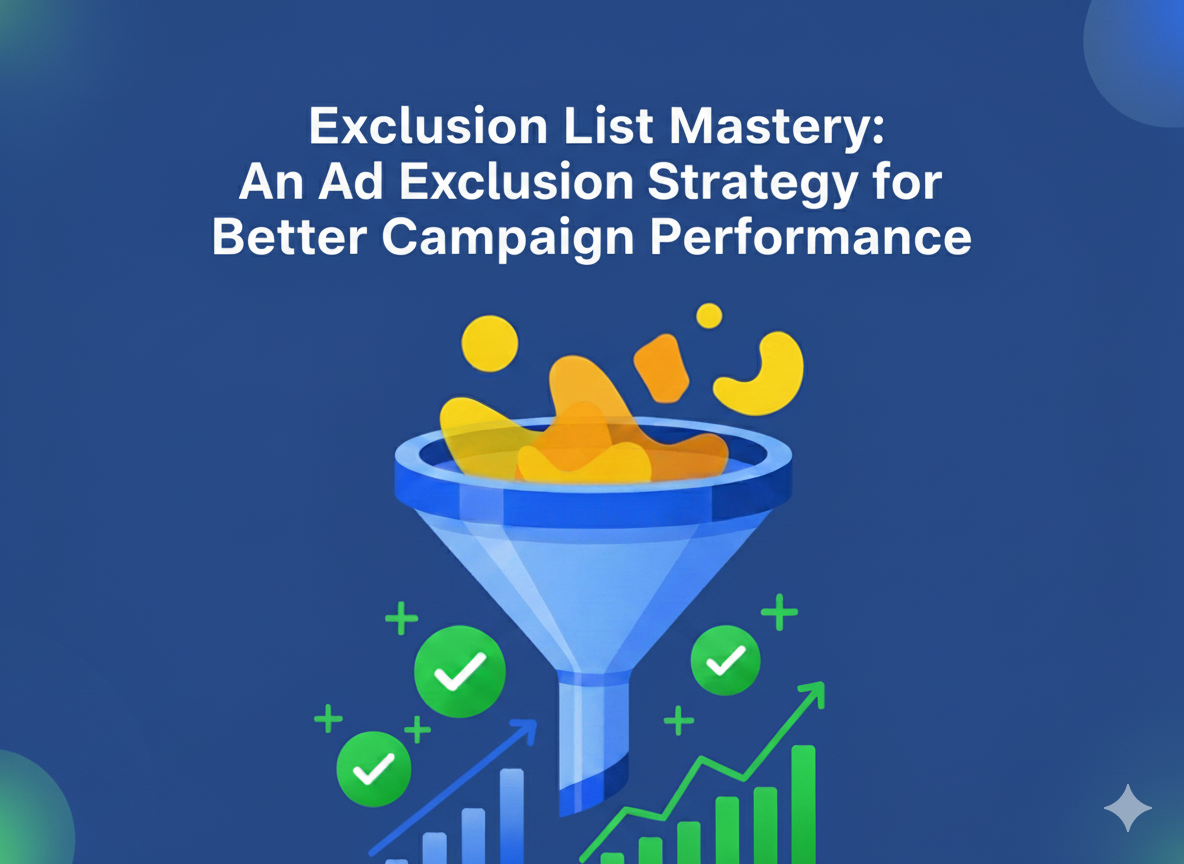By Clark Mago
Your paid ad campaigns are running, but are they truly delivering? The numbers on your dashboard may show clicks and impressions, but you’re still not seeing the qualified leads you need to fuel your business growth. It’s a frustrating scenario—you’re spending money, but the return is murky at best.
The problem often isn’t what you’re targeting; it’s who you’re not targeting. Wasted ad spend is a silent drain on your budget, chipping away at your profitability with every irrelevant click. This is where mastering your exclusion lists comes in. A smart ad exclusion strategy is your secret weapon for cutting through the noise and focusing your ad budget where it matters most.

Why Your Exclusion List is as Important as Your Keyword List
Think of your ad campaigns like a fishing net. Your keywords and targeting are what define the type of fish you’re trying to catch. Your exclusion lists are what let the unwanted fish pass through the net. Without a solid ad exclusion strategy, you’re paying to reel in every bit of digital debris, from competitors to job seekers, instead of the valuable leads you’re after.
Here are the key areas you need to focus on:
1. Excluding Irrelevant Search Terms: You’re paying for clicks, so make sure they’re from people who could actually become customers. Review your Search Term Report regularly. You’ll often find your ads appearing for keywords that are related to your industry but have no commercial intent. For example, if you sell B2B software, you might be showing up for “free business software” or “business software jobs.” Add these terms to your negative keyword list to stop wasting money on clicks that will never convert.
2. Excluding Existing Customers: Your current clients are great, but they don’t need to see your lead generation ads. Exclude your customer list from your ad campaigns. Not only does this save you money, but it also improves the user experience for people who have already bought from you. This simple step is a core part of an effective ad exclusion strategy.
3. Excluding Competitors: Are your competitors clicking on your ads? Are people searching for your competitors’ names seeing your ads? While sometimes you want to be visible, it’s often a waste of budget to be in a bidding war with companies you’re not going to convert. Add your main competitors’ brand names to your exclusion list to ensure you’re not spending money on clicks that are just curiosity-driven or, worse, maliciously intended.
The Impact on Your Bottom Line
Implementing a robust ad exclusion strategy has a direct and measurable impact on your key metrics. By eliminating irrelevant traffic, you’ll immediately see a lower cost per click (CPC) and a higher click-through rate (CTR) from the clicks that matter. Most importantly, you will see a reduction in your cost per acquisition (CPA), which means your ad budget is working more efficiently to deliver real, qualified leads.
Stop pouring money into a leaky bucket. Your business deserves a predictable and transparent lead generation system. Instead of vague reports and unfulfilled promises, a data-driven approach focuses on optimizing every dollar you spend.
Tired of wasted ad spend and lackluster results? DoubleDome Digital Marketing specializes in crafting data-driven Google Ads Management strategies that deliver a predictable stream of qualified leads. We provide clear reporting and tangible results, so you can stop guessing and start growing.








